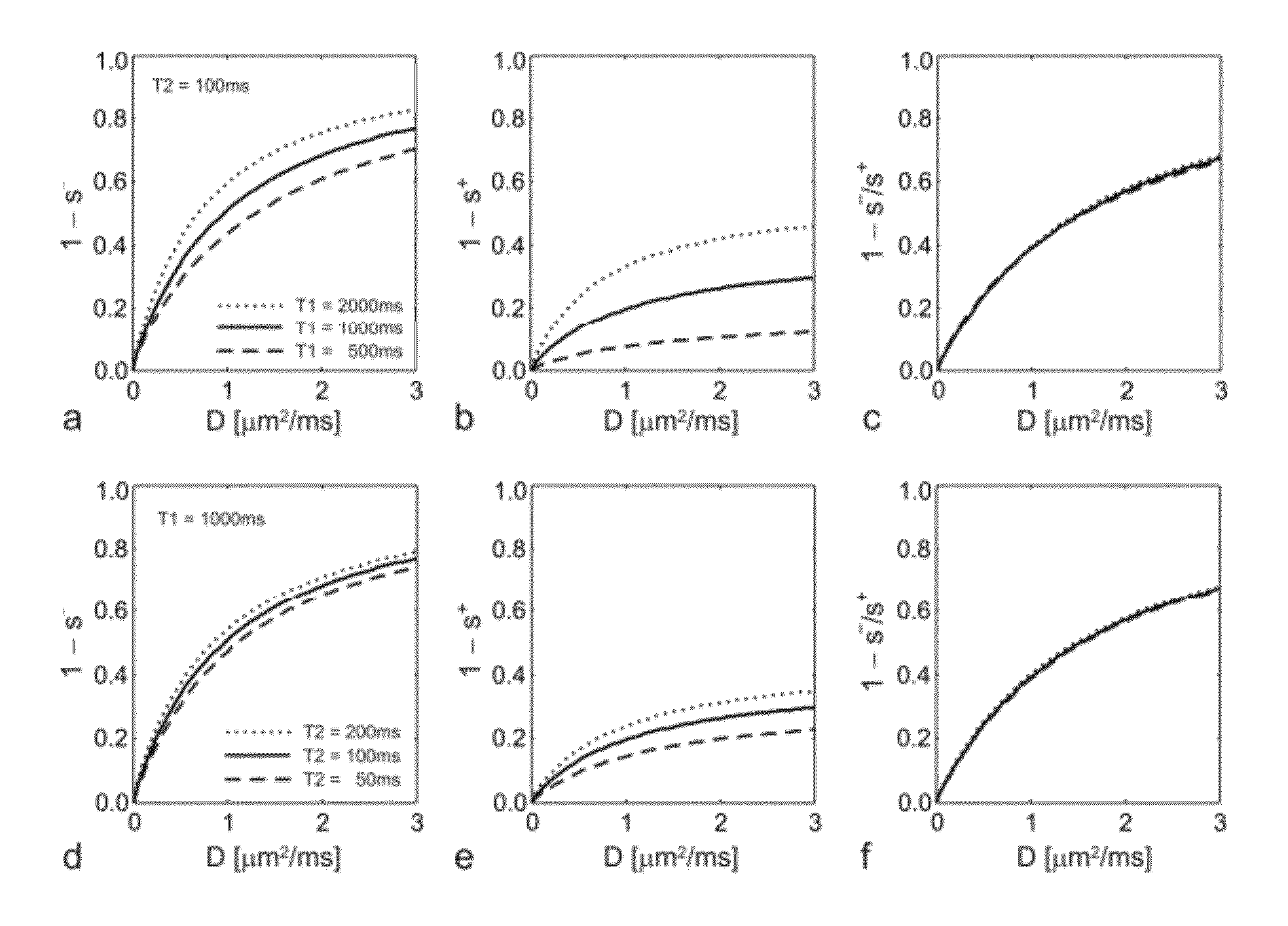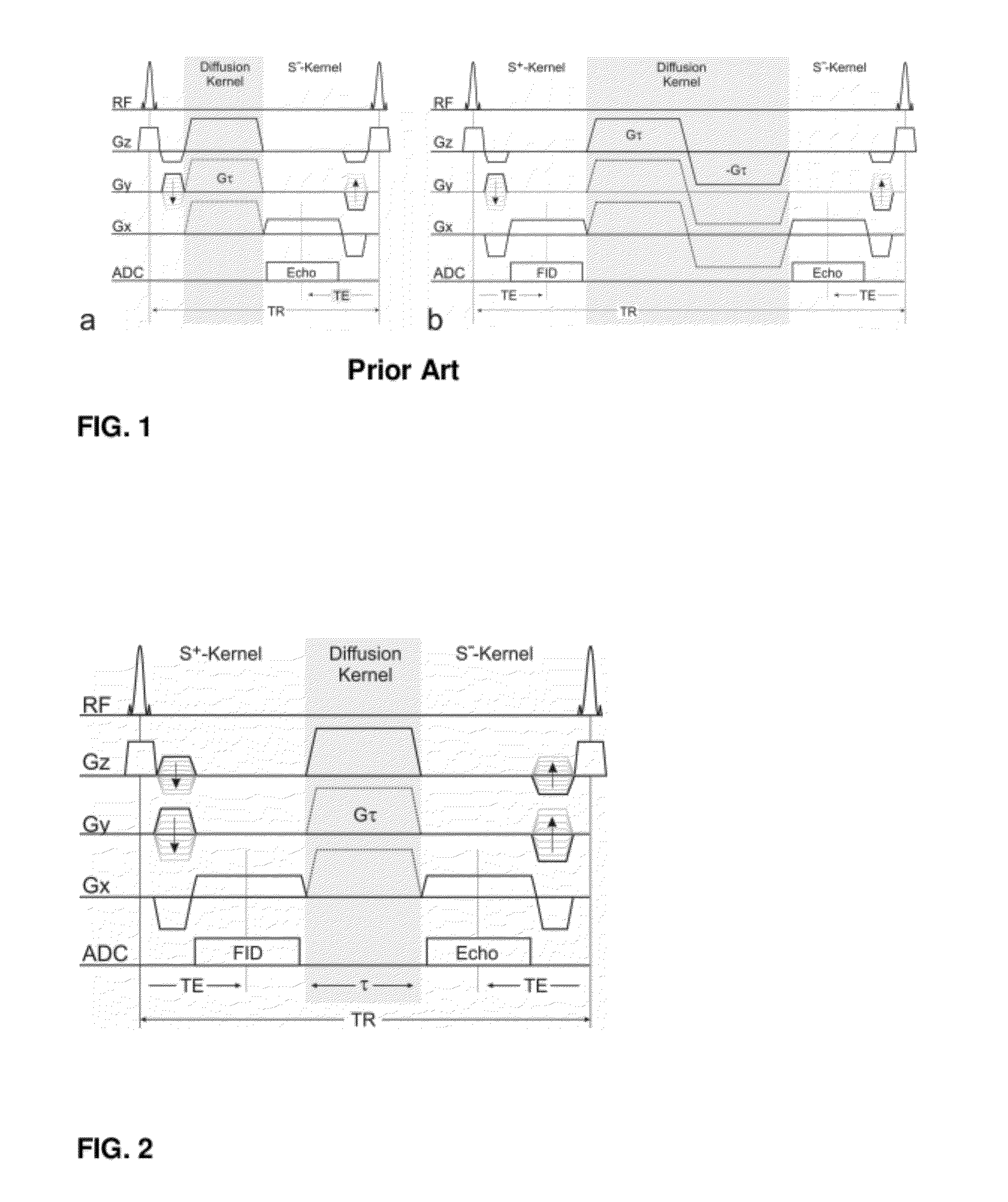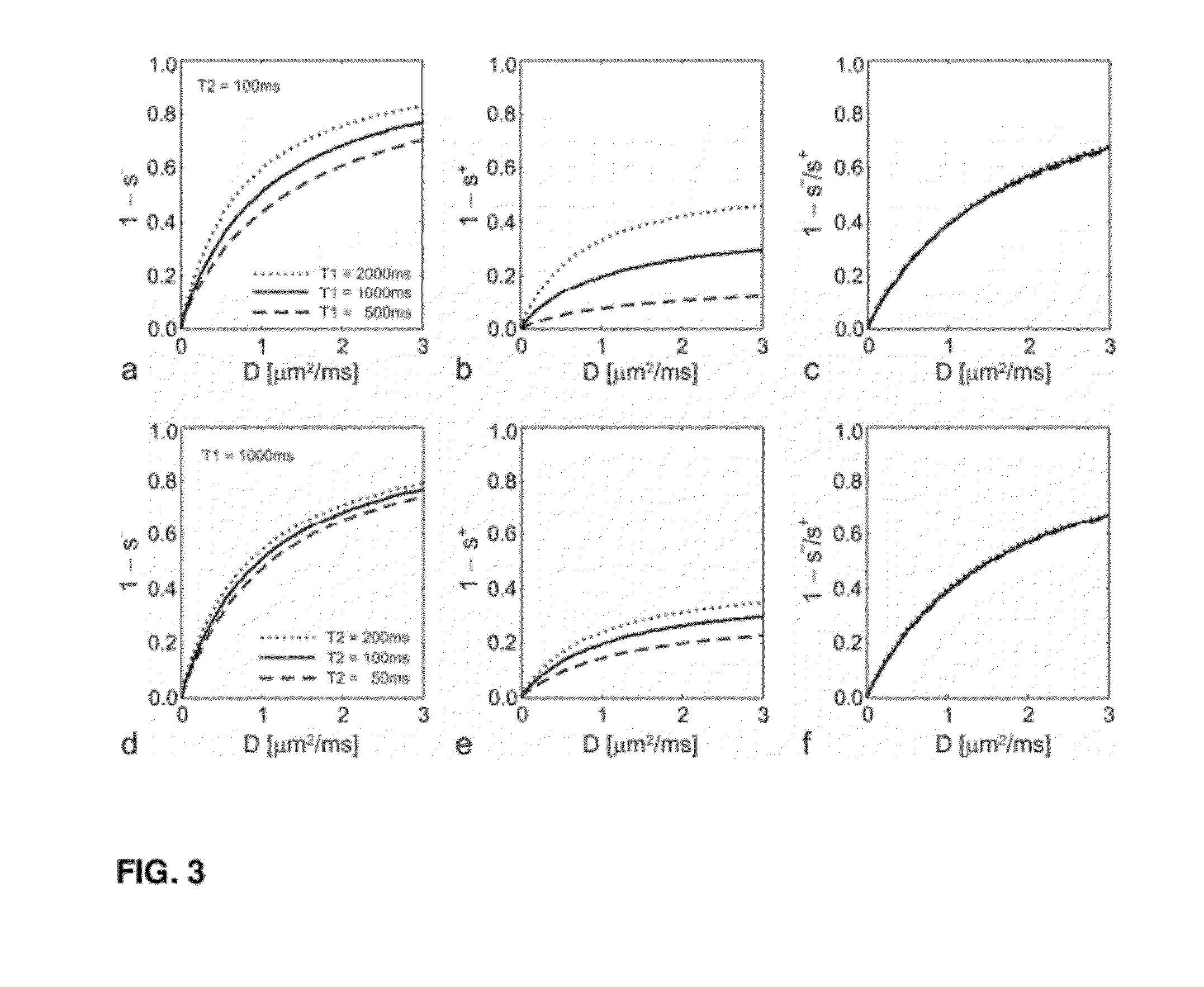Magnetic resonance method for quantification of molecular diffusion using double echo steady state sequences
a steady-state sequence and magnetic resonance technology, applied in the field of magnetic resonance imaging, can solve the problems of increasing malignancy, ct techniques cannot reproduce the relative high contrast of mri images, and shortcoming of inability to adequately differentiate between similar but otherwise distinct tissue types
- Summary
- Abstract
- Description
- Claims
- Application Information
AI Technical Summary
Benefits of technology
Problems solved by technology
Method used
Image
Examples
Embodiment Construction
[0047]The invention provides a method for the quantification of molecular diffusion, which preferably combines speed with high resolution and high sensitivity. The method is suitable for the assessment of physiological and / or functional parameters of a wide variety of target samples including, e.g., cartilage and spinal cord as well a muscle, liver, brain and / or nerve tissue some of which have high susceptibility variation. In general the image(s) that provide information about molecular diffusion and / or a molecular diffusion constant can be acquired in scans lasting in total less than 10, 9, 8, 7, 6, 5 or 4 minutes. The molecular diffusion is assessed via a diffusion-weighted double echo SSFP (dwDESS) sequence. Sensitivity to diffusion is achieved via an unipolar diffusion sensitizing gradient that is, preferably, placed between said at least one second FID signal (“free induction decay” signal also referred to herein as SSFP-FID (S+) signal or FISP) and at least one second SSFP Ec...
PUM
 Login to View More
Login to View More Abstract
Description
Claims
Application Information
 Login to View More
Login to View More - R&D
- Intellectual Property
- Life Sciences
- Materials
- Tech Scout
- Unparalleled Data Quality
- Higher Quality Content
- 60% Fewer Hallucinations
Browse by: Latest US Patents, China's latest patents, Technical Efficacy Thesaurus, Application Domain, Technology Topic, Popular Technical Reports.
© 2025 PatSnap. All rights reserved.Legal|Privacy policy|Modern Slavery Act Transparency Statement|Sitemap|About US| Contact US: help@patsnap.com



